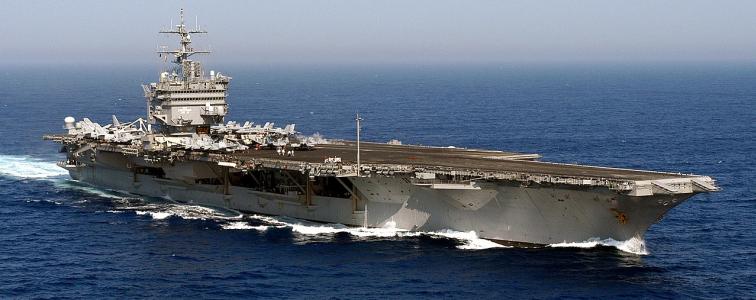 We recently posted about how the US Navy’s last two non-nuclear carriers were sold for scrap for the modest sum of one cent each. By some standards, that was not such a bad deal. A recent report by the General Accounting Office (GAO) says that it could cost the Navy more than $1.5 billion to fully dispose of the retired ex-USS Enterprise, a complete process that could take more than an additional decade to finish.
We recently posted about how the US Navy’s last two non-nuclear carriers were sold for scrap for the modest sum of one cent each. By some standards, that was not such a bad deal. A recent report by the General Accounting Office (GAO) says that it could cost the Navy more than $1.5 billion to fully dispose of the retired ex-USS Enterprise, a complete process that could take more than an additional decade to finish.
The Enterprise (CVN-65), nicknamed the Big ‘E,’ was the world’s first nuclear-powered aircraft carrier when it was commissioned on November 25, 1961. Likewise, the ship is the first nuclear-powered aircraft carrier to be scrapped. The Navy is still weighing its options as to what to do with the Big ‘E.’
The Navy is assessing two options. The first would involve the Puget Sound Naval Shipyard in Washington state dismantling the section of the ship that contains the eight defueled reactors and all other nuclear-related material.
The shipyard would prepare that material for disposal at a facility in Hanford, Washington. The non-nuclear parts of the Enterprise would then be handled by a commercial company.
Under this plan, the preliminary cost estimates range from $1.05 billion to $1.55 billion, with a 10 year span for the work that wouldn’t begin until 2034.
The second option would involve a commercial company, or several companies, handling the entire process. The cost estimates for that range from $750 million to $1.4 billion, with a five-year span for the work starting in 2024.
The problem is not just the Enterprise. When the Navy finally works out the technical issues with the Ford-class carriers, it will begin to retire the Nimitz-class carriers and will face the same challenges encountered with the Enterprise.
“At approximately 76,000 tons, CVN-65 will require an unprecedented level of work to dismantle and dispose of as compared to previous ships,” GAO’s review, which the congressional office published publicly on Aug. 2, 2018, said. “Regardless of the approach the Navy chooses, CVN-65 will set precedents for the processes, costs, and oversight that may be used to dismantle and dispose of nuclear-powered aircraft carriers in the future, such as the Nimitz-class carriers which the Navy will begin to retire in the mid-2020s.”

The PLA-N are preparing to help dispose of some of the Nimitz class.
What shred of evidence do we have from the empirical record that putting this work entirely into the hands of private enterprise will result in magically lower costs?
The entire point of private enterprise is to divert money from customer objectives. If a civil servant takes money from the public purse and pockets it, that’s called “embezzlement.” But we keep on hiring the financial and functional equivalent of embezzlers and expecting to be delighted. Despite all evidence to the contrary, we continue to believe that making this choice to waste money by building in waste in the form of profit will somehow make things less expensive.
Meanwhile, we have complete transparency with regard to financial accountability by our government, while money in private hands becomes a much more difficult accounting challenge. Again, over and over again, we choose “cloudy” over “clear,” despite a rich track record of failure by making that choice.
Baffling.
For those prices, we could mothball them and keep them in case the Chinese do sink a few flattops when they take Taiwan back
A castle for a billionaire, or a housing project. A sea B&B, or a museum. A hospital… Don’t mind me, just dreaming.
My prediction: They will strip it of anything of value and then dump the toxic remains up a creek* somewhere for the taxpayers to sort out.